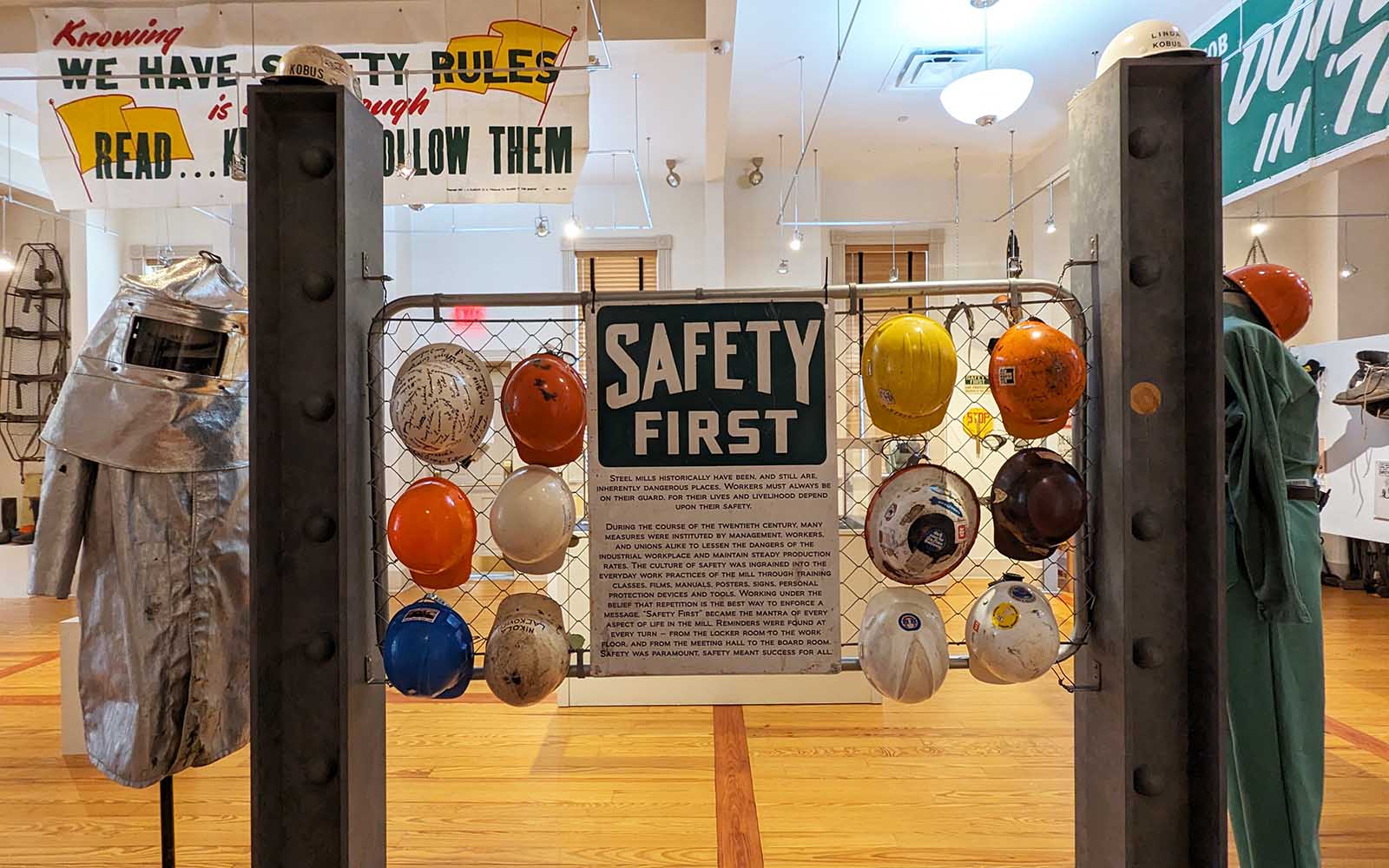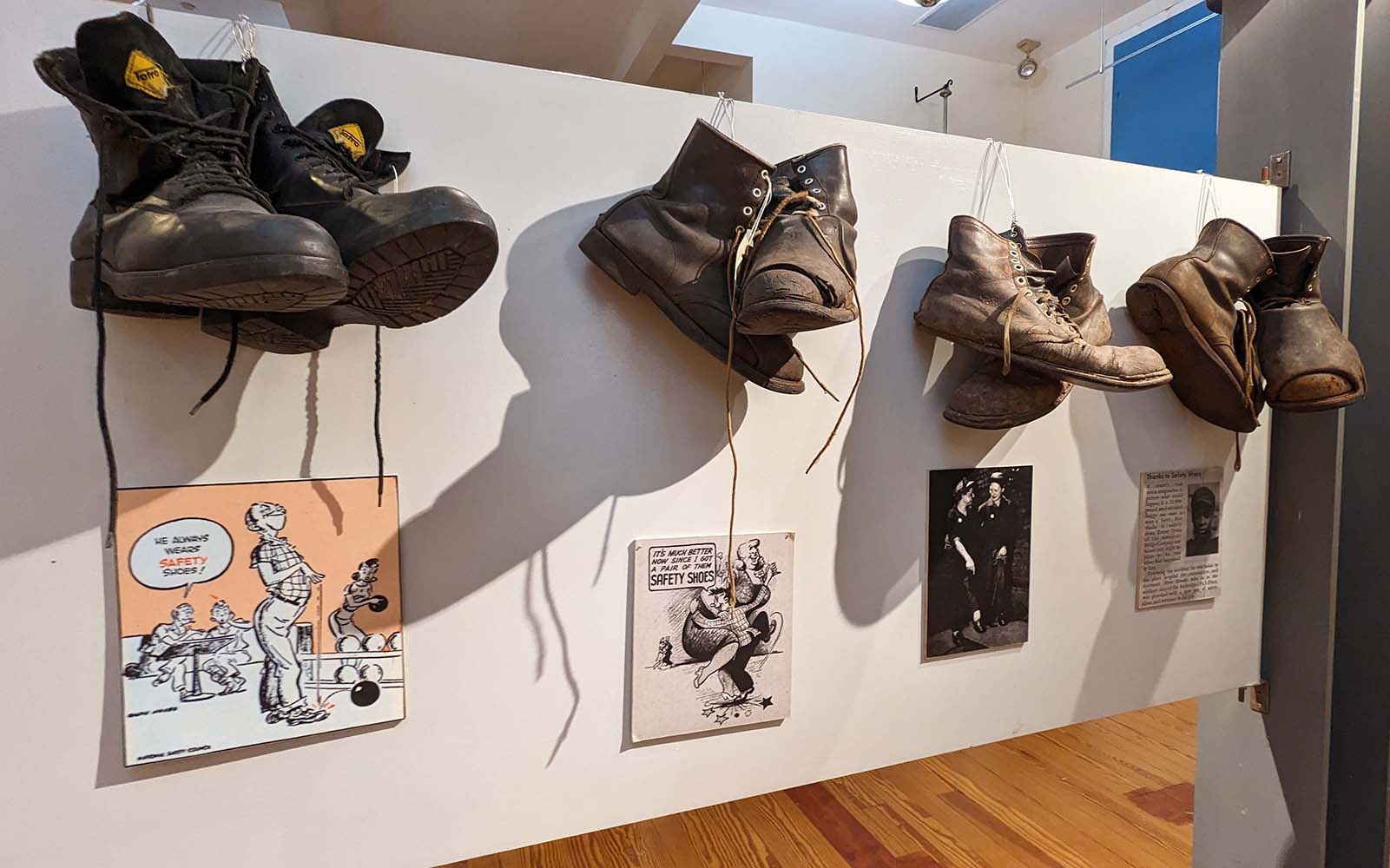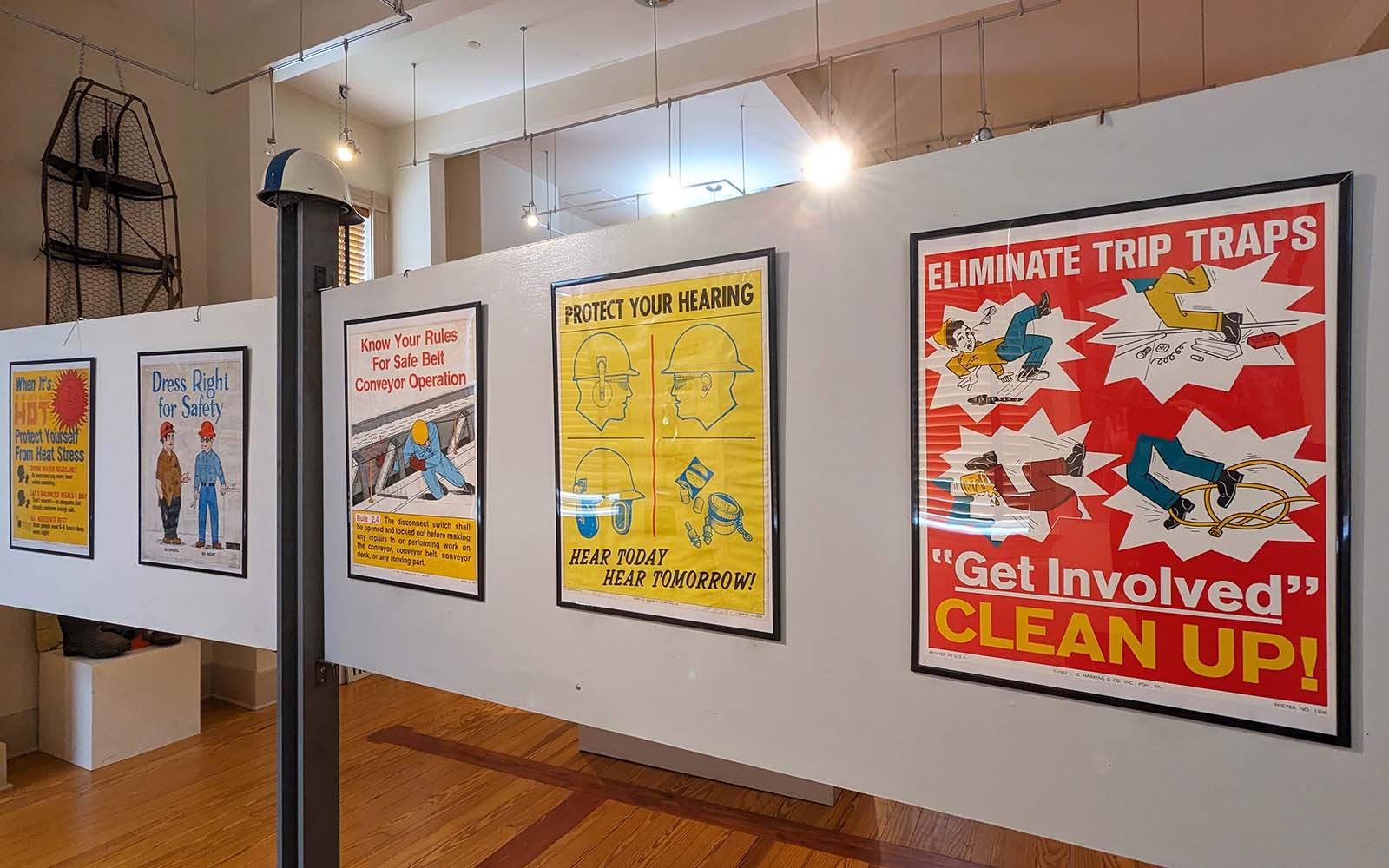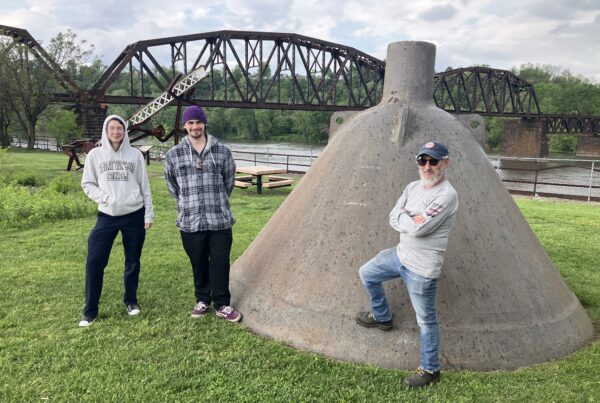
A Conversation with Curator Ron Baraff
The exhibition Safety First is on view at the Bost Building through November 15. Recently, Carly McCoy, Rivers of Steel’s communications director, sat down with Ron Baraff, the exhibition’s curator and the director of historic resources and facilities, to learn more about the culture and influence of the “safety first” mantra.
Safety First Q&A
Carly McCoy: Thanks, Ron, for sitting down with us today to chat about the new Safety First exhibition at the Bost Building in Homestead. I understand this installation is a new look at a topic visited by Rivers of Steel about 15 years ago for an exhibition. How is this display different, and why was it important to you to revisit this theme?
Ron Baraff: We went into the wayback machine for this one! The original installation was a great success and an exhibition that we hated to take down, so this seemed like an opportune time to revisit it. Working under the belief that repetition is the best way to enforce a message, “safety first” was and still is the mantra at all iron and steel facilities. Workers must always be on their guard, for their lives and livelihood depend upon their safety. Reminders are found at every turn—from the locker room to the work floor, and from the meeting hall to the boardroom. Safety is paramount. Safety means success for all.
CM: As you alluded to in your response, “safety first” is a phrase that is ubiquitous in this region—and I imagine other places with steel heritage. It’s embedded in our region’s culture. Would you say it crossed over into America’s collective consciousness?
RB: The term “safety first” is truly ubiquitous—not just in this region but worldwide. It is part of the common vernacular not just in industry, but for everyone. It has been used in marketing campaigns for anything from baby strollers to driving schools and video games. Hollywood has embraced the slogan, using it as a title for movies and television series. Why, Harold Lloyd, the great silent-film comedian, based arguably his most well-known film Safety Last as a play on the slogan. It is everywhere and eminently identifiable.
CM: What types of artifacts can people expect to encounter, and how did they come to be part of Rivers of Steel’s archival collections?
RB: The Safety First exhibition incorporates manuals, posters, signs, personal protection devices, and artifacts from our collections that allow visitors to see and experience what workers were exposed to on a daily basis to ensure their safety and promote an accident-free environment in the workplace.
 CM: When you consider this exhibition, how are individual workers represented as compared to the collective “worker”?
CM: When you consider this exhibition, how are individual workers represented as compared to the collective “worker”?
RB: Throughout the twentieth century, measures were instituted by management, workers, and unions alike to lessen the dangers of the industrial workplace and maintain steady production rates. The culture of safety was ingrained into the everyday work practices of the mill through training classes, films, manuals, posters, signs, personal protection devices, and tools. Many of these daily reminders of Safety First made their way into the personal belongings of the workers. Rivers of Steel has been fortunate to be the repository of the keepsakes from the closets and attics of area steelworkers and their families. These artifacts didn’t come from the corporations, but rather from the workers themselves. They were an integral part of their everyday lives, ensured their survival and success and, thereafter, their memories of the workplace.
CM: You could argue that signage is at the heart of this exhibit, as it is the medium through which the safety messaging was communicated. What’s intriguing to me about signs is how the typography and images are so very reflective of the time and place in which they were created. What do the signs in the show say to you about the context in which they were created?
RB: One of the most effective means of delivery for the message of “safety first” was through posters and banners. Many of the posters used vivid and often humorous graphics and catch phrases to convey their message. Among the best of these posters are from the Jack Boot collection, which are dominant within the exhibition. They are so strikingly of their era—the 1960s and early 1970s. They are relatable, bright, and kitschy. Their message stays with you through their appeal and imagery.
 CM: Tell us more about the Jack Boot series.
CM: Tell us more about the Jack Boot series.
RB: Jack Boot was a graphic designer and printer from Munhall who made many of the most memorable posters in our collections. They use humor, vivid colors, striking imagery, and catchy phrasing to make their point. Jack’s widow donated the collection to Rivers of Steel several years ago, and they still stand as one of my personal favorites. They are memorable and creative but stay on point to ensure that the workplace culture always puts the emphasis on safety first!
CM: When’s a good time for people to view the Safety First exhibition?
RB: The exhibition is on view Mondays through Fridays, from 10:00 a.m. through 3:00 p.m. through November 15, 2024 at the Bost Building in Homestead. Visitors are welcome to stop by, but it is helpful if tickets are purchased in advance—just so we know you will be visiting us!
If folks are not familiar with the Bost Building, it is a National Historic Landmark owned and managed by Rivers of Steel, designated so for its role in the Homestead Lockout and Strike in 1982. Today it serves as the visitors center for the Rivers of Steel National Heritage Area, in addition to offering permanent and temporary exhibitions in its galleries. It is also the headquarters for Rivers of Steel and the home to our archival collections.
Carly V. McCoy is the director of marketing and communications for Rivers of Steel. 
With a passion for lifelong learning, Carly’s role as director of marketing & communications for Rivers of Steel allows her to draw from her experiences, both professional and personal, to amplify the many assets of the Pittsburgh region—celebrating its history, heritage, artistry, and innovation of its residents to encourage heritage tourism, community engagement, and economic revitalization.
Her previous articles include 2023 Collaborations and Beyond, The Historic Preservation of the Carrie Blast Furnaces, and A Decade-Long Journey for a 120-Year-Old Building.







